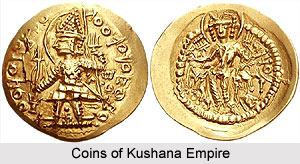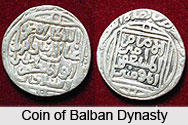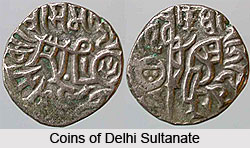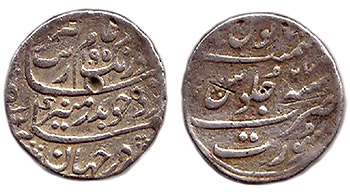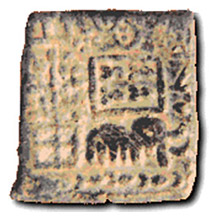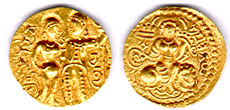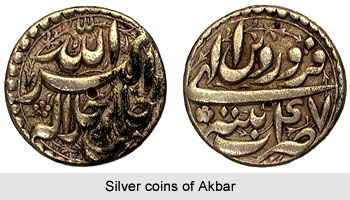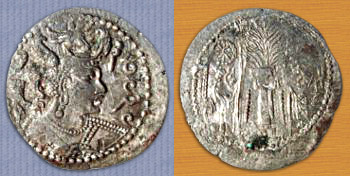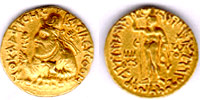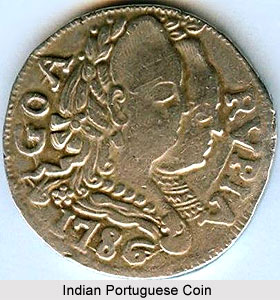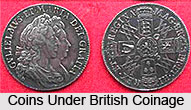 The British presence in India started in 1612, with the establishment of the East India Company and its initial settlement in Surat. The British started minting coins from the mid 17th century.
The British presence in India started in 1612, with the establishment of the East India Company and its initial settlement in Surat. The British started minting coins from the mid 17th century.
Early English settlements in India had three broad grouping: those in Western India which comprised of Bombay & Surat, those in South India comprising of Madras and those in the Eastern Province of Bengal which was mainly Calcutta. Early English coins accordingly developed along three broad strands in consonance with the local acceptability of the coins for the purposes of trade.
The coins of Bengal were developed along the Mughal pattern; those of Madras were struck along South Indian lines both in design and metrology (Pagoda) as well as along Mughal designs. The English coins of Western India developed along Mughal as well as English patterns. It was only in 1717 AD that the English obtained permission from the Emperor Farrukhsiyar to coin Mughal money at the Bombay mint. English pattern coins were struck at the Bombay Mint.
The gold coins were termed Carolina, from the name of King Charles II but apparently never issued any of these, the silver coins Anglina, the copper coins Cupperoon and tin coins Tinny. By the early 1830, the English had become the dominant power in India. The rise of one dominant power after over a hundred years of turmoil enabled the enactment of the Coinage Act of 1835 and for uniform coinage to be issued.
To expand their trade in the region, the British started minting in 1692 this very rare rupee in Mughal style in the name of King William III and Queen Mary, their first coinage bearing a Persian inscription.
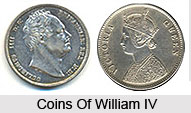 The text says, on obverse, "Coin struck during the reign of king William and queen Mary", and on reverse, "in their 6th regnal year. Coin of the English Company struck at Munbai". As Aurangzib, the ruling Great Mughal, was offended by this coin, the experiment was stopped in 1695. As their "European style" coinage was not accepted outside their jurisdiction, and after having briefly tried to struck rupees in Mughal style bearing the name of the British king (the previous coin), the British obtained in 1717 the right to strike their own rupees in the name of the Mughal Emperor.
The text says, on obverse, "Coin struck during the reign of king William and queen Mary", and on reverse, "in their 6th regnal year. Coin of the English Company struck at Munbai". As Aurangzib, the ruling Great Mughal, was offended by this coin, the experiment was stopped in 1695. As their "European style" coinage was not accepted outside their jurisdiction, and after having briefly tried to struck rupees in Mughal style bearing the name of the British king (the previous coin), the British obtained in 1717 the right to strike their own rupees in the name of the Mughal Emperor.
Matthew Boulton who can rightly be considered as "the father of modern coinage" struck an extraordinary bronze coin in Birmingham. In 1786, he design steam-driven coin-stamping machines, at the time when counterfeiting had reached levels that worried the government enough to think about ordering more sophisticated coinage. Boulton`s machines could strike up to 120 coins a minute, depending on design complexity, and by 1792 he signed his first contract with the East India Company. These coins, with thick rims, incused legends, lettered edge and low die relief, were far superior to any coin seen at that time. They were issued five years before the British Mint, reluctant and more conservative, finally asked Boulton to make new two pence, penny, halfpenny and farthing coins for the UK.
Newly designed coins with the effigy of William IV on the obverse and the value on the reverse in English and Persian, were issued in 1835.
The coins issued after 1840 bore the portrait of Queen Victoria. The first coinage under the crown was issued in 1862 and in 1877 Queen Victoria assumed the title the Empress of India.
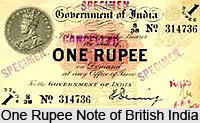 Edward VII succeeded Queen Victoria and the coins issued bore his effigy. The Indian Coinage Act, 1906 was passed which governed the establishment of Mints as well as the coins that would be issued and the standards that would be maintained (Rupee 180 grains, Silver 916.66 standard; Half Rupee 90 grains, Quarter Rupee 45 grains). George V succeeded Edward VII. Acute shortage of silver on account of World War I, led the British Government to issue paper currency of One Rupee and Two and a half Rupees. The silver coins of smaller denominations were issued in copra-nickel. Edward VIII in turn succeeded George V. However no coins were issued during his short reign. Geroge VI ascended the throne in 1936. The compulsion of the Second World War led to experiments in coinage where the "Quaternary Silver Alloy" replaced the standard rupee. The Quaternary Silver coins were issued from 1940. In 1947 these were replaced by pure Nickel coins.
Edward VII succeeded Queen Victoria and the coins issued bore his effigy. The Indian Coinage Act, 1906 was passed which governed the establishment of Mints as well as the coins that would be issued and the standards that would be maintained (Rupee 180 grains, Silver 916.66 standard; Half Rupee 90 grains, Quarter Rupee 45 grains). George V succeeded Edward VII. Acute shortage of silver on account of World War I, led the British Government to issue paper currency of One Rupee and Two and a half Rupees. The silver coins of smaller denominations were issued in copra-nickel. Edward VIII in turn succeeded George V. However no coins were issued during his short reign. Geroge VI ascended the throne in 1936. The compulsion of the Second World War led to experiments in coinage where the "Quaternary Silver Alloy" replaced the standard rupee. The Quaternary Silver coins were issued from 1940. In 1947 these were replaced by pure Nickel coins.
